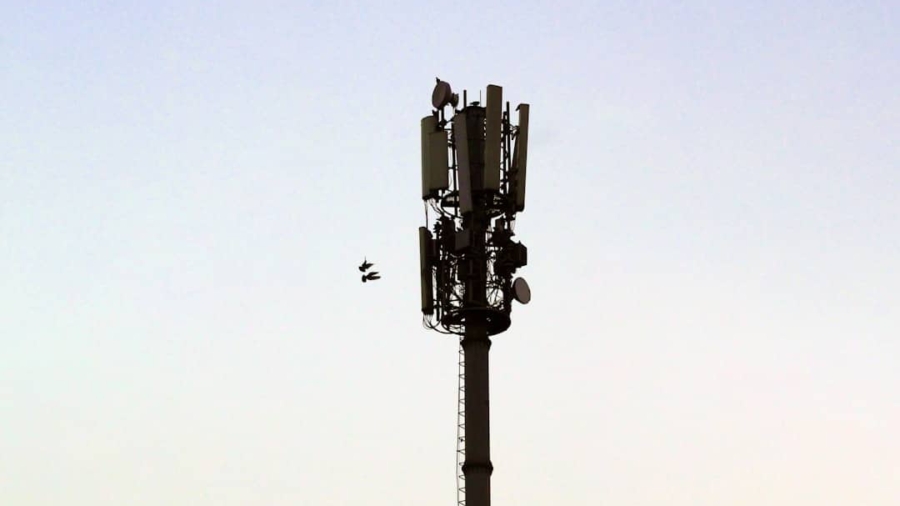The advent of 5G technology marks a significant leap in the evolution of mobile communication networks. Unlike its predecessors, 5G is designed to provide faster data transfer rates, reduced latency, and the ability to connect a vast number of devices simultaneously. This next-generation technology operates on a higher frequency spectrum, which allows for greater bandwidth and improved performance.
The implications of 5G extend beyond mere enhancements in mobile phone capabilities; they encompass a wide array of applications across various sectors, including healthcare, transportation, and, notably, disaster recovery. 5G technology is characterized by its three primary service categories: enhanced mobile broadband (eMBB), massive machine-type communications (mMTC), and ultra-reliable low-latency communications (URLLC). Each of these categories plays a crucial role in addressing the diverse needs of users and industries.
For instance, eMBB facilitates high-definition video streaming and virtual reality applications, while mMTC supports the connectivity of numerous IoT devices. URLLC is particularly vital in scenarios where real-time communication is essential, such as in emergency response situations. As communities face increasing threats from natural disasters and other emergencies, the integration of 5G into disaster recovery communication networks becomes increasingly relevant.
Key Takeaways
- 5G technology is the next generation of mobile internet connectivity, offering faster speeds and more reliable connections than ever before.
- Communication networks play a crucial role in disaster recovery, enabling first responders and relief organizations to coordinate and provide assistance effectively.
- 5G brings several advantages to disaster recovery communication networks, including higher data transfer speeds, lower latency, and increased capacity for connecting a large number of devices.
- However, challenges and limitations of 5G in disaster recovery include the need for extensive infrastructure deployment and potential security vulnerabilities.
- Case studies of 5G in disaster recovery communication networks showcase successful implementations and the positive impact of the technology in emergency situations.
Importance of Communication Networks in Disaster Recovery
Coordinating Rescue Efforts
Communication networks enable first responders to share critical information and access real-time data about the situation on the ground. This facilitates the coordination of their activities, which is essential for effective rescue operations.
The Difference Between Life and Death
In many cases, the speed at which information flows can mean the difference between life and death. Moreover, communication networks facilitate the connection between affected communities and external support systems, including government agencies, non-profit organizations, and humanitarian aid groups.
Establishing Resilient Communication Networks
In the absence of robust communication infrastructure, recovery efforts can be severely hampered, leading to prolonged suffering for affected populations. Therefore, establishing resilient communication networks is paramount for effective disaster management and recovery.
Advantages of 5G in Disaster Recovery Communication Networks

The integration of 5G technology into disaster recovery communication networks offers several advantages that can enhance response efforts significantly. One of the most notable benefits is the ultra-low latency that 5G provides. In emergency situations where every second counts, the ability to transmit data almost instantaneously can improve decision-making processes for first responders.
For example, real-time video feeds from drones or body cameras can provide situational awareness that is crucial for effective response strategies. Additionally, 5G’s capacity to support a massive number of connected devices simultaneously allows for the deployment of numerous IoT sensors and devices in disaster-stricken areas. These devices can monitor environmental conditions, track the movement of people and resources, and provide critical data to emergency management teams.
The ability to gather and analyze data from multiple sources in real-time enhances situational awareness and enables more informed decision-making during recovery operations. Another significant advantage of 5G is its enhanced reliability compared to previous generations of mobile networks. In disaster scenarios where traditional communication infrastructure may be damaged or overwhelmed, 5G’s distributed architecture can maintain connectivity even under adverse conditions.
This resilience is vital for ensuring that first responders can communicate effectively and that affected communities can access vital information and resources.
Challenges and Limitations of 5G in Disaster Recovery
Despite its numerous advantages, the implementation of 5G technology in disaster recovery communication networks is not without challenges. One major limitation is the infrastructure required to support 5G networks. The deployment of 5G necessitates a dense network of small cell towers and antennas, which can be costly and time-consuming to install.
In rural or remote areas that are often affected by disasters, establishing this infrastructure may pose significant logistical challenges. Moreover, while 5G offers improved performance, it is not immune to vulnerabilities. Cybersecurity threats are a growing concern as more devices become interconnected through 5G networks.
In disaster scenarios where communication systems are critical for coordination and response efforts, any disruption caused by cyberattacks could have dire consequences. Ensuring robust security measures are in place will be essential to protect these networks from potential threats. Another challenge lies in the digital divide that exists in many regions around the world.
While urban areas may benefit from advanced 5G infrastructure, rural communities may still rely on older technologies with limited connectivity options. This disparity can hinder equitable access to information and resources during disasters, exacerbating existing inequalities in disaster response efforts.
Case Studies of 5G in Disaster Recovery Communication Networks
Several case studies illustrate the potential impact of 5G technology on disaster recovery communication networks. One notable example occurred during the COVID-19 pandemic when 5G was leveraged to enhance telemedicine services in areas with limited healthcare access. In regions affected by natural disasters, similar applications could facilitate remote medical consultations for individuals who may be cut off from traditional healthcare facilities due to infrastructure damage.
Another case study involves the use of drones equipped with 5G technology for search and rescue operations following natural disasters such as hurricanes or earthquakes. Drones can provide aerial views of affected areas, allowing emergency responders to assess damage quickly and identify individuals in need of assistance. The high-speed data transmission capabilities of 5G enable real-time video streaming from these drones back to command centers, enhancing situational awareness and improving response coordination.
In Japan, where natural disasters such as earthquakes are frequent, 5G technology has been integrated into emergency management systems. The Japanese government has been testing 5G-enabled communication systems that allow for seamless information sharing among various agencies involved in disaster response. This integration has demonstrated improved coordination among first responders and has facilitated quicker decision-making processes during emergencies.
Integration of 5G with Other Technologies in Disaster Recovery

Data Analysis and Pattern Recognition
AI algorithms can process vast amounts of data collected from IoT devices and sensors in real-time, identifying patterns and predicting potential risks or resource needs.
Transparent and Accountable Disaster Recovery
The integration of 5G with blockchain technology can improve transparency and accountability in disaster recovery efforts. Blockchain can be used to track the distribution of aid and resources, ensuring that assistance reaches those who need it most while minimizing fraud or misallocation.
Enhanced Situational Awareness with AR
Furthermore, augmented reality (AR) applications powered by 5G can provide first responders with critical information overlays during rescue operations. For example, AR glasses could display building layouts or highlight areas where individuals may be trapped during search-and-rescue missions. This integration not only enhances situational awareness but also improves safety for responders navigating hazardous environments.
Future Outlook for 5G in Disaster Recovery Communication Networks
The future outlook for 5G technology in disaster recovery communication networks appears promising as advancements continue to unfold. As more regions invest in building out their 5G infrastructure, the potential for enhanced communication capabilities during emergencies will expand significantly. Governments and organizations are increasingly recognizing the importance of resilient communication systems in disaster preparedness and response planning.
Moreover, ongoing research into improving the security features of 5G networks will be crucial as reliance on these systems grows. Developing robust cybersecurity protocols will help mitigate risks associated with potential cyber threats that could disrupt communication during critical moments. As technology evolves, collaboration between public and private sectors will be essential to ensure that best practices are established for implementing 5G in disaster recovery contexts.
Additionally, as communities become more aware of the benefits that advanced communication technologies can bring during disasters, there may be increased demand for training programs focused on utilizing these tools effectively. Empowering first responders and community members with knowledge about how to leverage 5G technology will enhance overall preparedness and resilience against future disasters.
Conclusion and Recommendations for Implementing 5G in Disaster Recovery
To maximize the benefits of 5G technology in disaster recovery communication networks, several recommendations should be considered by policymakers and emergency management agencies. First and foremost, investment in infrastructure development must be prioritized to ensure that both urban and rural areas have access to reliable 5G connectivity. This includes not only building new towers but also upgrading existing systems to support advanced technologies.
Furthermore, fostering partnerships between government agencies, private sector companies, and non-profit organizations will facilitate knowledge sharing and resource allocation during disaster response efforts. Collaborative initiatives can lead to innovative solutions that leverage the strengths of various stakeholders involved in emergency management. Training programs focused on utilizing 5G technology effectively should also be implemented for first responders and community members alike.
By equipping individuals with the skills needed to navigate advanced communication systems during emergencies, communities can enhance their overall resilience against disasters. Finally, ongoing research into cybersecurity measures specific to 5G networks will be essential as reliance on these systems increases. Establishing best practices for securing communication channels will help protect against potential threats that could undermine disaster recovery efforts.
In summary, while challenges remain in implementing 5G technology within disaster recovery communication networks, its advantages present a transformative opportunity for enhancing emergency response capabilities. By addressing infrastructure needs, fostering collaboration among stakeholders, providing training opportunities, and prioritizing cybersecurity measures, communities can harness the full potential of 5G technology to improve their resilience against future disasters.
In a related article discussing the benefits of artificial intelligence in disaster recovery efforts, MyAI Account highlights how AI can streamline communication networks and improve response times during emergencies. By utilizing advanced algorithms and predictive analytics, AI technology can help organizations better coordinate resources and provide timely assistance to those in need.
FAQs
What is 5G technology?
5G is the fifth generation of wireless technology that promises faster speeds, lower latency, and the ability to connect more devices simultaneously.
How does 5G technology benefit disaster recovery communication networks?
5G technology can provide faster and more reliable communication networks during and after a disaster, enabling emergency responders to coordinate more effectively and providing better access to critical information for those affected by the disaster.
What are some specific ways 5G technology can be used in disaster recovery communication networks?
5G technology can be used to support real-time video streaming for situational awareness, enable remote monitoring of infrastructure and resources, and facilitate the deployment of drones and other unmanned systems for assessment and response efforts.
What are the challenges of implementing 5G technology in disaster recovery communication networks?
Challenges include the need for robust infrastructure to support 5G networks, potential interference from damaged infrastructure, and the need for coordination among multiple stakeholders to ensure seamless integration of 5G technology into existing communication networks.
How can 5G technology improve the resilience of disaster recovery communication networks?
5G technology can improve the resilience of communication networks by providing redundant and diverse connectivity options, enabling faster and more reliable communication in the event of infrastructure damage, and supporting the use of advanced technologies for disaster response and recovery.

